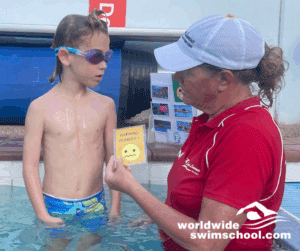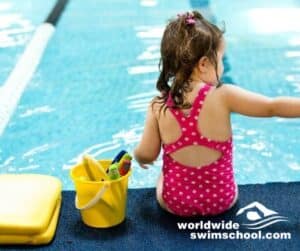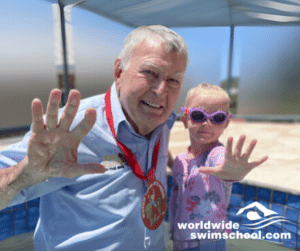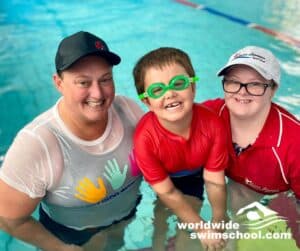Swimming lessons should be a positive experience for both parent and child. The water provides a unique environment that allows special parent and child bonding. Here, parents and their children can enjoy one on one time together with no interruptions. There are so many social, emotional and physical positives to enrolling children in swimming lessons from an early age. Here, we look at the importance of fun not force in quality swimming lessons.
Swimming lessons
- Promote children’s development through physical touch, eye contact, smiling, movement and the stimulation that comes from being in the water
- Develop social and emotional skills as children interact with their parents, teachers and other families
- Enhance the physical health and wellbeing of a child through low impact exercise which develops strength and cardiovascular fitness
While there are obvious benefits from learning to swim, what of the negative impacts that some parents and children have suffered? It’s not uncommon to hear an adult tell a horror story of how they learnt to swim and admit they are still uncomfortable in or around the water.
Learning to Swim Must be Fun
Leading ‘learn to swim’ experts are concerned that there are some practices in the learn to swim industry that are using methods which force children, while they are showing signs of discomfort or distress. Water safety advocate and Olympic swimming coach Laurie Lawrence said “Learning to swim must be fun. Force, fear or intimidation have no place in the teaching of swimming”.
Most experts agree that quality swimming programs should focus on the child’s development and readiness to learn swimming and water safety skills. Remember, it’s fun not force in quality swimming lessons. Good swimming teachers should read children’s body language and adjust their approach accordingly, backing off if the child is showing any signs of distress. Swimming teachers must also educate parents on how to respond to their children’s cues.
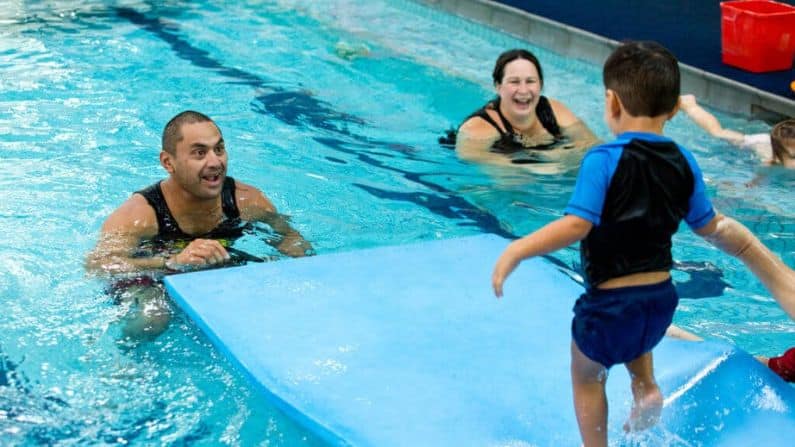
Obvious Signs of Distress
Some signs are obvious like crying, trying to escape, pushing away, throwing the head back, arching the back, flapping arms up and down, vigorously shooting/kicking legs in and out from body, clutching or trying to clutch onto caregiver or teacher.
Subtle Signs of Distress
Other signs are; subtler like stiff body movements, gazed or withdrawn look, clenched teeth or shivering when the water is warm, touching or covering ears with hands – especially the left ear, frowning – tension in face around eyebrows, elevated heart rate and flushed face not due to physical exertion hot environment or illness, widened eyes and/or dilated pupils; fists clenched in toddlers and pre-schoolers.
Janine Ramsey, who has worked in the learn to swim industry for the over 35 years as a swimming teacher, owner/operator and now consultant, has observed some concerning scenarios.
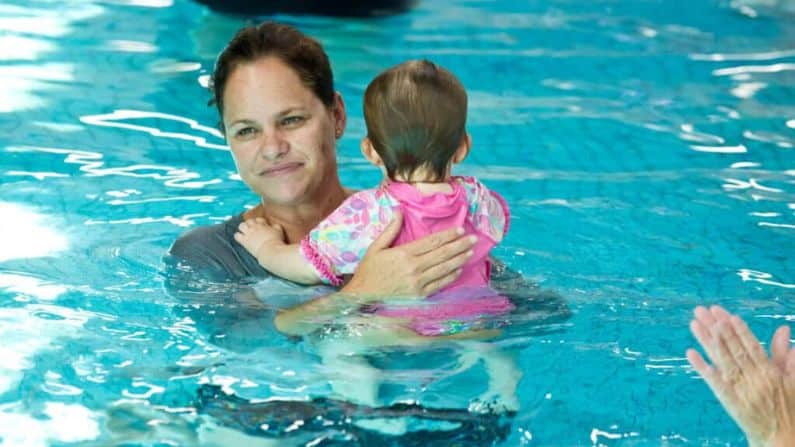
Concerning Examples Include:
- A child being made to get in the pool (requiring some degree of co-operation between caregiver and teacher). Even if crying, screaming, sobbing, have mucous running down their face; often with caregiver leaving or being sent out of sight.
- Being made to stay in for the whole lesson, or until they stop crying. Or meet other conditions imposed by caregiver and/or teacher which might simply be until they give up.
- Putting a baby/child under when they are not ready – no breath control or psychological readiness. Can be by pushing them under or by letting the child go.
- Using threats of (or actually) putting the child under or letting them go. In order to try and make them stop crying, behave or co-operate.
- Keeping a baby/child in the back float position to a point of distress. Forcing the back float while the child tries to sit up, cries, shakes their arms, shivers or ingests water.
- Making the infant/child swim further than they are capable of by standing too far away. Releasing them for a swim to the wall (or some other place) from too far away. Or by not picking up the child soon enough, resulting in the child experiencing panic and possibly ingesting water.
Examples Also Include:
- Repeated submersions or combinations of activities that are performed when the child is visibly distressed. Or ingesting water or vomiting, struggling to get a breath, trying to get away, or may be displaying signs of dissociation, Also shut down in order to cope with what is being done to them.
- Swimming teachers not correcting inappropriate or dangers behaviour of parents in their swimming lesson.
- Doing anything else that results in distress for the child.
Janine explains that she has personally seen one or more of these scenarios occur in all kinds of programs. They have occurred in many different swim schools locally and throughout the world. She also said “research shows that high levels of distress can damage the child’s developing brain. When the child is in a state of distress, they are unable to engage in social learning. Therefore, it is imperative to soothe the child’s distress to minimise the risk of harm. As well as prior to attempting any activities.” This is why it is important to remember that it should be fun not force in quality swimming lessons.
Laurie Has Put Together a Checklist for a Good Swim School
- Choose a Swim School that is a member with a peak swimming organisation
- Make sure swimming teachers hold nationally recognised training for swimming teachers,
current CPR and working with children check. - Ensure Swim Schools and teachers participate in regular professional development
and are committed to constantly improving teaching skills. - Choose a program that encourages parental involvement in the swimming lesson.
- Ensure administration/management can answer any questions or concerns you may have.
- Visit a number of swim schools in your area to compare the quality of the lessons.
- Be mindful of the approach you take with children who show signs of distress.
- Trust your instincts and choose a program that suits your family’s needs.
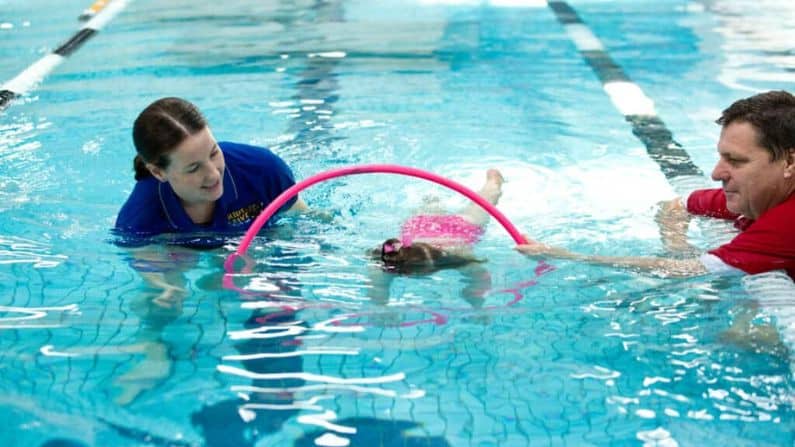
Conclusion
Swimming should be a fun and exciting learning experience for parent and child. With patience and commitment instructors will achieve excellent results with fun not force in swimming lessons, intimidation or negative experiences. It is hopeful that management and instructors will continue to work on the delivery of their lessons and work towards creating a good quality learning experience in a positive swimming environment.
Join our community and keep up to date with new articles, special offers - it is free to join!
Looking for more information on learning how to swim - don't go past the Swim Library.


